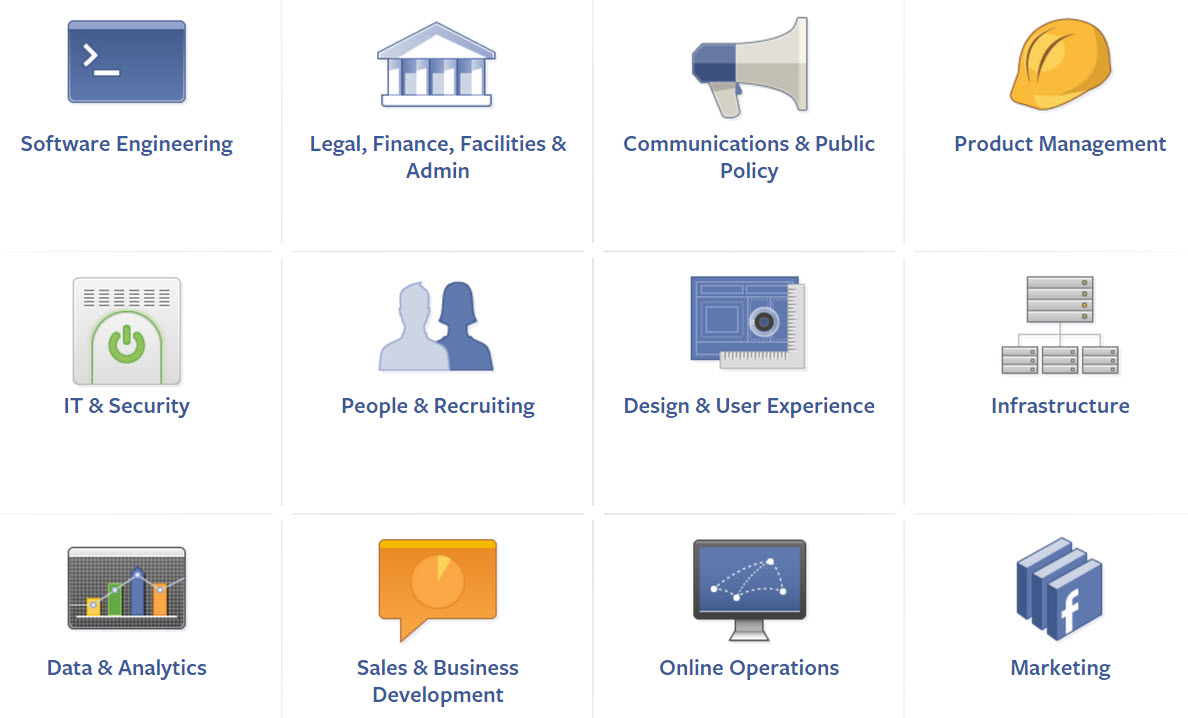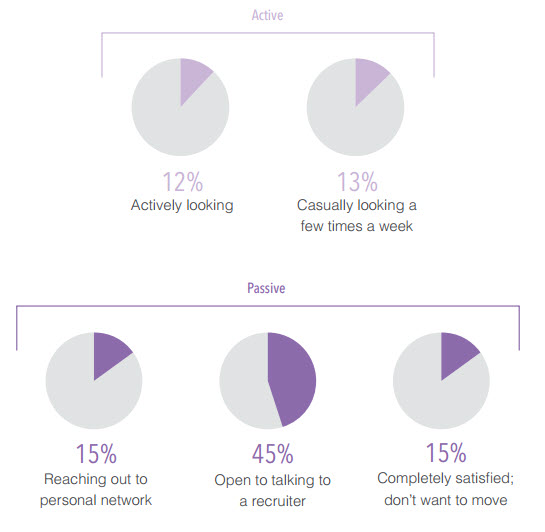Nearly a year ago I stumbled across an interesting post on LinkedIn that revealed that Facebook’s single biggest recruiting focus was NOT what most people would assume.
Can you guess what it might be?
Software engineering? Nope.
Infrastructure? Wrong.
People and recruiting? Not even close.
It’s sales and business development.
At the time of the article, Facebook had 170 openings in Sales and Business Development compared to 97 openings for software engineers.
What’s even more interesting is that Facebook’s demand for recruiting sales and business development people has increased 65% over the past year, outpacing a 60% increase in the demand for software engineers. At the time of this post, Facebook’s careers page showed 280 openings for sales and business development roles compared to 155 openings for software engineers and 142 openings for infrastructure roles.
What Does This Mean For Sourcing and Recruiting?
As George Anders from Forbes pointed out,
There’s a bigger message here.Think of Facebook’s job postings as a peek into the next decade’s career options for all of us. We’re in the midst of an age of incredible technological disruption to traditional jobs. But there’s a way to make your career automation-proof without needing a high-tech Ph.D. As I’ve suggested before, the key to sustained employment will be to concentrate on the people skills that machines can’t copy.
Furthermore, George highlighted that
…the U.S. Bureau of Labor Statistics updated its 10-year employment projections, listing the fields where it expects the most job growth by 2022. The BLS’s top 10 areas for expansion include two categories that are totally customer facing: retail sales and customer service, as well as four health-care sectors (including nursing and home health aides) in which basic people skills such as empathy make all the difference.
Can you see where I am going?
Over the past year, I’ve seen many articles written by people in HR/recruiting that suggest technology will displace and reduce the need for humans in the recruiting process.
However, effective recruiting and especially sourcing, based on my proposed definition of what sourcing is – the identification, engagement and assessment of non-applicants (what most people refer to as “passive” talent) with the goal of converting the right people into applicants (i.e., real recruiting!) requires basic (and advanced!) people skills and empathy.
You Can’t Automate the Sales Process
It is pretty easy to automate the application and even the hiring process, but you can’t automate the elicitation and understanding of a person’s primary motivators and the gap between a person’s current employment situation and what they see as the next step in their career, especially with non-applicants, who, unlike active and even casual job seekers, are people who haven’t previously given this any thought at all.
Let’s not forget that the vast majority of the total talent pool (75%!) isn’t going to search for and apply to your positions. This is a big reason why sourcing and true recruiting (as opposed to processing applicants) is so critical to acquiring top talent.
Furthermore, you simply can’t automate the articulation of how a particular company, group, department, team, project and/or position aligns to specifically meet the needs of each individual being recruited, which I would argue is perhaps the most critical aspect of recruiting people. In my experience, this is how you can convert people who were not looking for a new position when initially contacted into interested and pre-closed candidates/applicants by the end of the phone call.
Whether you realize it or not, the sourcing and recruiting process practically mirrors the traditional sales process.
Without going too deep down that rabbit hole (I’ll save that for a future post), you should know that effectively engaging prospective candidates is essentially step 3 of the sales process (“The Approach”), understanding a person’s work/career motivators and goals mirrors step 4 of the sales process (“Needs Assessment”), and articulating how an opportunity specifically addresses a person’s work/career motivators and goals is pretty much the same thing as step 5 of the sales process (“The Presentation”).
As such, the importance of human connections and understanding cannot be underestimated in sales and recruiting processes.
You can’t meet the needs of a person without 1) understanding what those needs are, and 2) understanding how your opportunity specifically aligns with the needs of each individual you attempt to recruit.
Perspective (the ability to understand another person’s point of view and the relative importance of things) and empathy (the ability to understand and share the feelings of another) is specifically critical, as for most people, as the decision to make a job/career change is highly emotional and most often not driven purely or even predominantly by logic and practical concerns (compensation, location, etc.) and is of course unique for each individual.
Don’t even get me started on how poorly most job descriptions represent the true opportunity, if they do at all!
Final Thoughts
Facebook’s primary source of income comes from advertising, and as Anders pointed out, Facebook’s hiring priorities are a wake-up call regarding the importance of human connections. Facebook has realized that even in the highly automated, self-serve world of online marketing, it still takes a proactively human touch to make deals happen.
While you can automate the processing of applicants and hiring, you can’t really automate recruiting, because sourcing/recruiting is a sales process requiring interactions and people skills that machines can’t copy.
I will be writing more in the near future about how artificial intelligence and automation will and will not affect sourcing and recruiting in the near and distant future.
Short version: Nothing to fear and extremely exciting times ahead for people who truly source and recruit.
Stay tuned!

